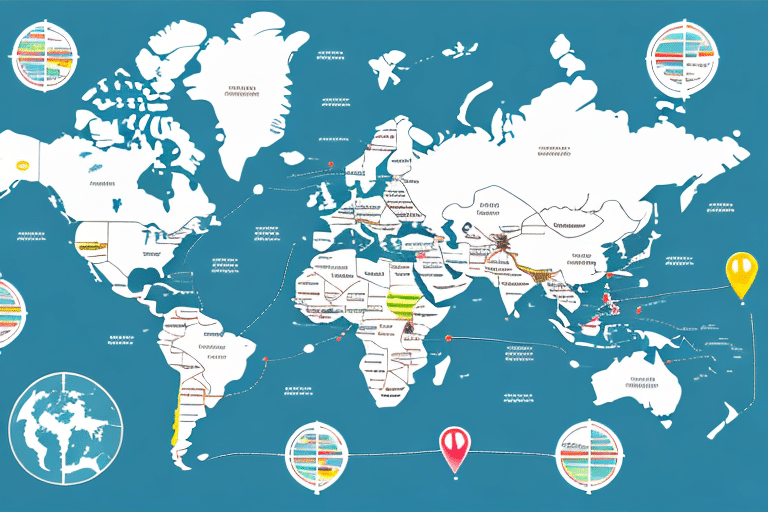Reducing Shipping Rates with Shipping Zones and Cost Solutions
Shipping is a critical component of any e-commerce business, enabling swift and efficient delivery of products to customers. However, shipping costs can significantly impact profit margins and competitiveness within the market. High shipping rates not only reduce profitability but can also deter potential customers. This article explores how optimizing shipping zones and implementing cost-effective solutions can help reduce shipping rates, thereby enhancing your bottom line and customer satisfaction.
Understanding Shipping Zones and Their Impact on E-commerce
Shipping zones are geographical areas defined by carriers to determine shipping rates based on the distance between the origin and destination of a package. Generally, the closer the destination to the origin, the lower the shipping rate. Understanding these zones is essential for accurately calculating shipping costs and identifying opportunities to minimize expenses.
Comparing Shipping Zones Across Different Carriers
Shipping zones can vary significantly between carriers such as UPS, FedEx, and USPS. It is crucial to research and compare the zone charts of different carriers to ensure you are selecting the most cost-effective option for your shipping needs. For example, UPS Shipping Zones provide detailed information on how rates are structured based on distance and package weight.
Zone Skipping Strategies
Some carriers offer zone skipping services, which consolidate packages to bypass certain zones, thereby reducing overall shipping costs. Implementing zone skipping can lead to substantial savings, especially for businesses shipping in high volumes. According to the Inbound Logistics, zone skipping can reduce shipping costs by up to 20% for eligible shipments.
Strategies to Optimize Shipping Rates
Optimizing shipping rates involves a combination of selecting the right carriers, negotiating better rates, and utilizing technology to streamline shipping processes. Here are several strategies to help you achieve lower shipping costs:
Negotiate with Shipping Carriers
Large-volume shippers have the leverage to negotiate better rates with carriers. Contact your carrier representatives to discuss volume discounts or exclusive service agreements. Building a strong relationship with your carriers can lead to more favorable terms and reduced shipping costs.
Leverage Shipping Software
Using advanced shipping software can automate label printing, track shipments in real-time, and compare rates across multiple carriers. Tools like ShipStation and Shippo can help streamline your shipping operations and identify the most cost-effective options for each shipment.
Analyzing Shipping Data for Cost Optimization
Data-driven decisions are essential for optimizing shipping costs. By analyzing shipping data, businesses can identify trends, high-cost areas, and opportunities for improvement.
Track Shipping Volume and Patterns
Monitoring your shipping volume and patterns helps in understanding peak periods and high-demand regions. This information can be used to negotiate better rates or adjust inventory distribution to minimize shipping distances. According to Supply Chain Digital, businesses that utilize shipping data effectively can reduce their shipping costs by up to 15% annually.
Implement Inventory Management Strategies
Optimizing inventory placement based on shipping data ensures that products are stored closer to high-demand areas. This reduces shipping distances and costs. Utilizing inventory management software can help automate this process and ensure efficient stock distribution.
Sustainable Shipping Practices to Reduce Costs and Environmental Impact
Implementing sustainable shipping practices not only reduces costs but also minimizes the environmental footprint of your business.
Use Eco-friendly Packaging
Adopting sustainable packaging materials, such as recycled or biodegradable options, can lower packaging costs and appeal to environmentally conscious consumers. Companies like EcoCourier offer a range of eco-friendly packaging solutions that can help reduce shipping costs while promoting sustainability.
Optimize Shipping Routes
Optimizing shipping routes using advanced routing software can decrease the number of miles traveled, resulting in lower fuel costs and reduced carbon emissions. Tools like Route4Me provide route optimization features that can help businesses streamline their delivery processes.
Leveraging Third-Party Logistics (3PL) for Cost Savings
Partnering with a third-party logistics provider (3PL) can offer expertise and resources that help reduce shipping costs and improve efficiency.
Access to Discounted Rates
3PLs often have established relationships with carriers, allowing them to secure discounted shipping rates that may not be available to individual businesses. This can lead to significant cost savings, especially for small to medium-sized enterprises.
Advanced Logistics Solutions
3PLs provide comprehensive logistics solutions, including warehousing, inventory management, and order fulfillment. By outsourcing these functions, businesses can focus on core activities while benefiting from optimized shipping processes. For more information, visit 3PL Logistics.
Best Practices for Negotiating Lower Shipping Rates
Effective negotiation with carriers can lead to substantial reductions in shipping costs. Here are some best practices:
Understand Carrier Pricing Structures
Gain a thorough understanding of how carriers structure their pricing, including base rates, fuel surcharges, and additional fees. This knowledge enables you to identify areas where you can negotiate more effectively.
Leverage Shipping Volume
Use your shipping volume as a bargaining tool. Highlighting your consistent shipping volume can help you secure better rates or additional discounts from carriers.
Compare Multiple Carriers
Regularly compare rates and services from multiple carriers to ensure you are getting the best deal. Tools like ParcelMonitor can assist in comparing carrier rates and finding the most cost-effective options.
Conclusion
Reducing shipping rates is essential for enhancing profitability and maintaining competitive advantage in the e-commerce landscape. By understanding shipping zones, negotiating effectively with carriers, leveraging shipping software, and implementing sustainable practices, businesses can significantly lower their shipping costs. Additionally, partnering with third-party logistics providers and utilizing data-driven strategies can further optimize shipping operations. Implementing these strategies not only improves the bottom line but also enhances customer satisfaction and contributes to environmental sustainability.
For more insights on optimizing your shipping strategy, consider consulting industry reports from sources like U.S. Department of Transportation and Supply Chain Digital.






















